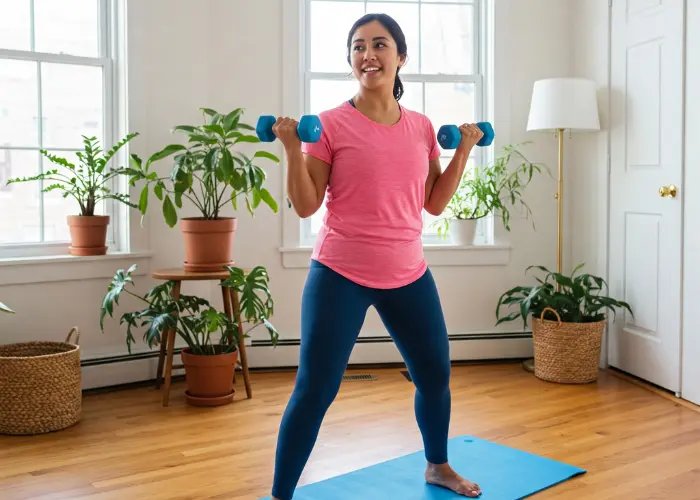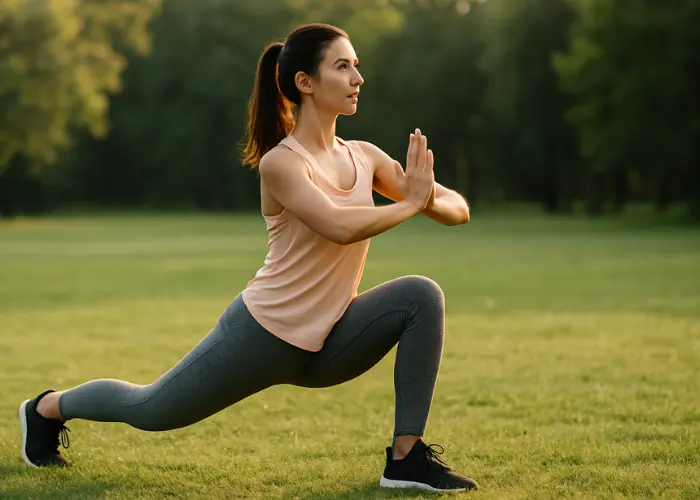Looking to feel stronger, more energized, and improve your overall well-being? Strength training might be the missing piece in your wellness puzzle. It’s not just for bodybuilders—it’s for everyone, especially beginners looking to build muscle, boost metabolism, and stay active for life.
In this guide, we’ll walk you through simple, safe steps to start strength training as a beginner—no gym membership required.
Why Strength Training Matters for Your Health
Strength training (also known as resistance training) involves exercises that make your muscles work against a force or weight. It’s one of the most effective ways to maintain healthy body composition, improve bone density, and support mental well-being.
According to the Centers for Disease Control and Prevention (CDC), regular strength training helps reduce the risk of chronic diseases like type 2 diabetes and heart conditions. And it doesn’t take much—just two to three sessions per week can bring big benefits.
Getting Started: What You Need (and Don’t Need)
Starting strength training as a beginner can be done right at home. Here’s what you really need:
- Comfortable clothes and shoes
- A pair of light dumbbells (or water bottles)
- A yoga mat or soft surface
- A positive mindset
You don’t need expensive equipment or a personal trainer to begin. The most important thing is consistency and proper form.
Basic Strength Training Moves for Beginners
Here are five foundational exercises that work multiple muscle groups. Start with 2 sets of 10–12 reps and rest 30–60 seconds between each set.
1. Bodyweight Squats
Targets: Legs and glutes
Keep your feet shoulder-width apart and back straight. Lower yourself as if sitting in a chair, then return to standing.
2. Wall Push-Ups
Targets: Chest and arms
Stand a few feet from a wall, place your palms on it, and lower your chest toward the wall, then push back.
3. Dumbbell Rows
Targets: Back and shoulders
Use light weights or household items. Bend slightly forward, pull the weights toward your chest, then lower.
4. Glute Bridges
Targets: Glutes and core
Lie on your back with knees bent, feet flat. Lift your hips to form a straight line from knees to shoulders.
5. Standing Overhead Press
Targets: Shoulders and arms
Hold weights at shoulder height and press upward until arms are straight. Lower with control.
How to Build a Weekly Strength Routine
Here’s a simple plan to follow:
- Day 1: Full-body strength workout
- Day 2: Rest or light activity (like walking or yoga)
- Day 3: Strength workout
- Day 4: Rest or stretching
- Day 5: Strength workout
- Weekend: Optional light cardio or rest
Over time, you can add more sets, reps, or weight as you build muscle and confidence.
Safety Tips and Motivation for Beginners
Staying safe is key, especially if you’re new to exercise:
- Warm up with 5–10 minutes of light cardio
- Focus on form over speed or weight
- Listen to your body—don’t push through pain
- Hydrate and fuel your body with balanced nutrition
Want to know what counts as good form? The National Institutes of Health (NIH) has great tips for older adults that work well for everyone.
Ready to Get Stronger?
Starting a strength training routine doesn’t have to feel intimidating. With just a few simple exercises, you can begin to build muscle, gain confidence, and improve your overall health. Stick with it—and remember, progress is personal.
If you enjoyed this guide, don’t forget to:
✅ Share with a friend
✅ Leave a comment below—What’s your favorite strength move?



